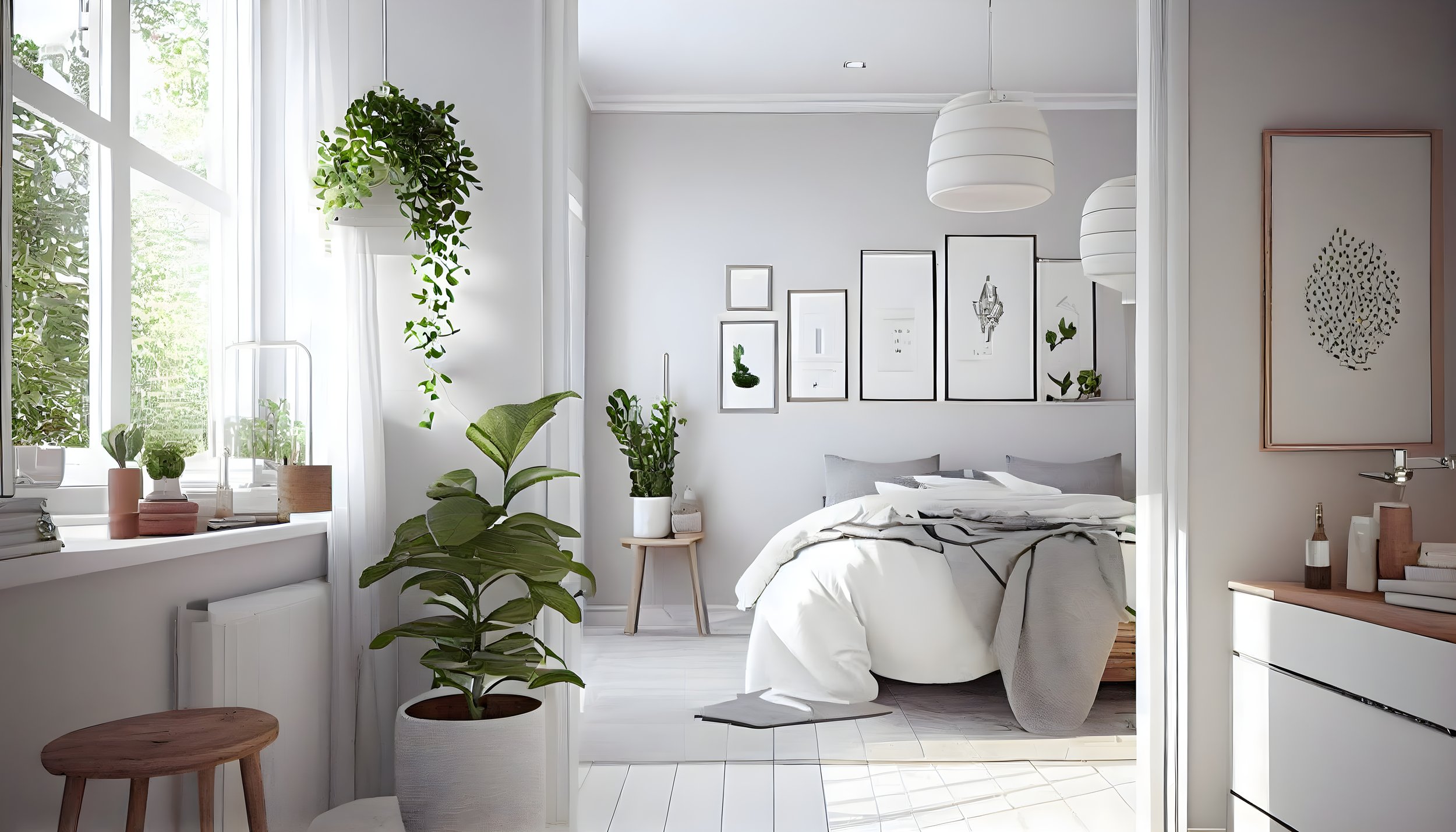Decorating a Small Space to Make it Feel Larger | Colour
Welcome back to the blog series on Decorating a Small Space! In the last week’s installment, we explored the importance of decluttering to create a more spacious feel. Now, we will take a look at another crucial element of small space design: color. By choosing the right color scheme, you can create the illusion of more space and a cohesive, harmonious look throughout your room. In this post, there are tips for using light and neutral colors, as well as how to choose a cohesive color palette to maximise the potential of your small space.
Photo by Durffee Mill/Adobe Stock #568063519
5 Tips for Decorating a Small Space to Make it Feel Larger
1. Avoid clutter and keep surfaces clean and organized - blog post here
2. Use colour - post continues below
3. Choose furniture that is appropriately scaled for the room - blog post here
4. Incorporate reflective surfaces into your decor - blog post here
5. Use decorative baskets and storage containers - blog post here
Bonus post: Decorating a Small Space to Make it Feel Larger | Lighting - blog post here
Decorating a Small Space to Make it Feel Larger | Colour
Decorating a small space can be a challenging task, but choosing the right colour scheme can make all the difference. By using light and neutral colours, you can make a small space feel larger and more open. And by choosing a cohesive colour scheme, you can create a sense of harmony and flow throughout the space.
Step 1: Use light colours on walls and ceilings to create an open, airy feel
When it comes to decorating a small space, one of the most important things to consider is the colour. Light colours on walls and ceilings can make a small space feel larger by reflecting light and making walls recede. In contrast, dark colours can absorb light and make walls appear closer, which can make a small space feel even smaller.
Light, neutral colours such as white, beige, pale grey, or pastel shades can create an illusion of more space. These colours can help to brighten up the room and make it feel more open and airier. They also tend to be versatile, making it easier to incorporate different types of decor into the space.
Another advantage of using light colours is that they can be easily paired with other colours. Light walls create a blank canvas for other colours and textures in the room, allowing you to add pops of colour with accessories or bold furniture. In addition, using light colours can help to create a cohesive look throughout the space, which can make it feel more put together.
When choosing the right colours for your small space, it's important to consider the undertones of the paint or wallpaper you're using. Warm undertones like yellow or orange can create a cosy, inviting atmosphere, but they can also make a small space feel more cramped. Cool undertones like blue or green can create a calming, refreshing vibe, but they can also make a small space feel chilly or sterile. To strike the right balance, you may want to opt for neutral colours with subtle undertones that complement your decor and personal style.
Here are some tips for choosing the right colours for your small space:
a) Consider the amount of natural light: If your small space doesn't get a lot of natural light, you may want to choose lighter colours to brighten it up. If you have a lot of natural light, you can experiment with bolder colours or deeper shades.
b) Think about your furniture and decor: The colours of your furniture, artwork, and accessories can influence the colour of your walls. If you have a lot of colourful decor, you may want to opt for a neutral wall colour that won't compete with your accents. If your decor is mostly neutral, you can add pops of colour with a bold accent wall or colourful accessories.
c) Test the colours in different lighting conditions: Before committing to a paint colour, it's a good idea to test it in different lighting conditions to see how it looks at different times of day. You can buy small samples of paint or use online colour visualization tools to get a sense of how the colour will look in your space.
Step 2: Choose a cohesive colour scheme throughout the space to create a sense of continuity and flow.
Choosing a cohesive colour scheme throughout your small space can make it feel more harmonious and create a sense of continuity and flow. By selecting colours that complement each other, you can create a cohesive and inviting space.
Here are some tips for choosing a cohesive colour scheme in your small space:
a) Start with a neutral base: Begin by selecting a neutral colour for your walls and larger furniture pieces. This will create a blank canvas for you to build upon and will make it easier to incorporate other colours.
b) Choose a limited colour palette: Select a limited colour palette of 2-3 colours to use throughout your space. This will help to create a cohesive and harmonious look.
c) Use accent colours sparingly: Use accent colours sparingly to add pops of colour to your space. Too many accent colours can make a small space feel busy and overwhelming.
d) Consider the mood: Think about the mood you want to create in your space and select colours that reflect that mood. Soft blues and greens can create a calm and relaxing environment, while brighter colours like yellows and oranges can create a more energetic and lively space.
e) Use colour to create depth: Use lighter colours on walls and ceilings to create a sense of openness and use darker colours on furniture and decor to create depth and contrast.
Combining Light and Neutral Colours with a Cohesive Colour Scheme
When combining light and neutral colours with a cohesive colour scheme, start by selecting a neutral base for your walls and larger furniture pieces. Then, choose a limited colour palette of 2-3 colours to use throughout the space, taking into account the mood you want to create.
Use lighter colours on walls and ceilings to create a sense of openness and use darker colours on furniture and decor to create depth and contrast. Use accent colours sparingly to add pops of colour to your space.
By following these tips, you can create a cohesive and inviting small space that feels harmonious and flows well. Using light and neutral colours in combination with a cohesive colour scheme can make a small space feel larger and more open, while also creating a sense of harmony and continuity.
Get ready to discover the mesmerizing world of color! Join me for an upcoming blog series where we'll delve even deeper into the fascinating nuances of color. Stay tuned for a journey that will ignite your creativity and transform the way you think about color.


